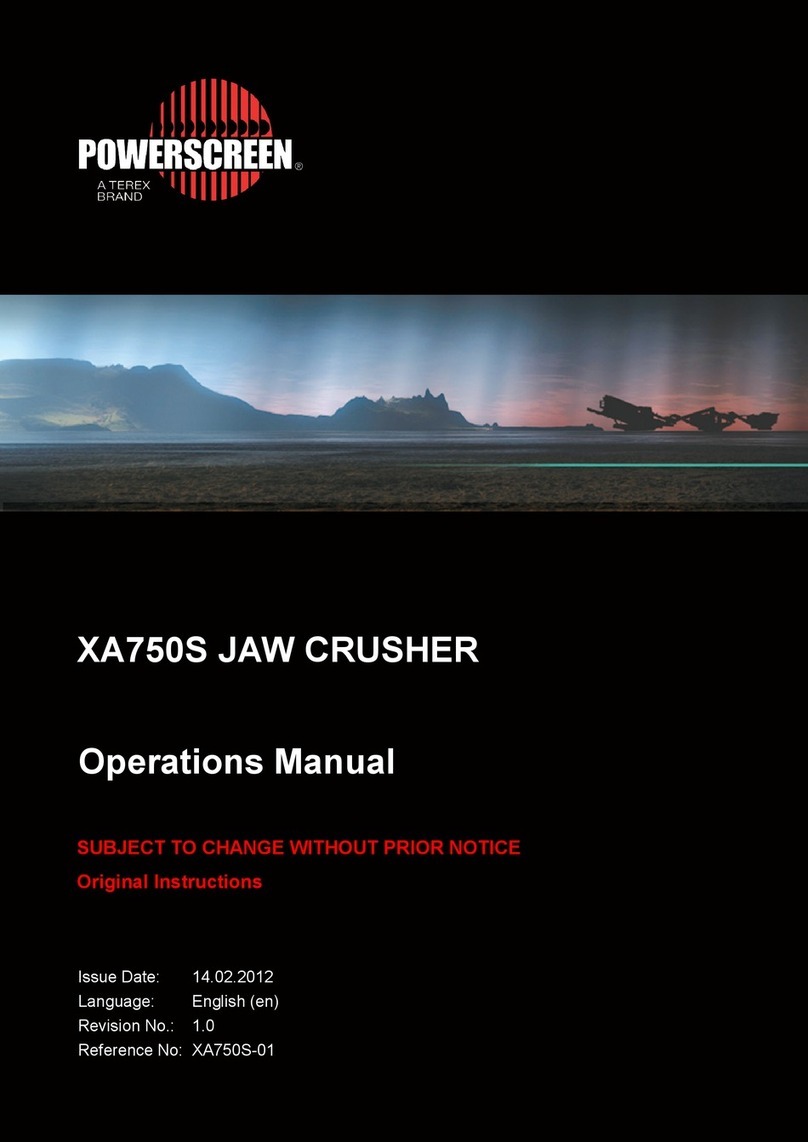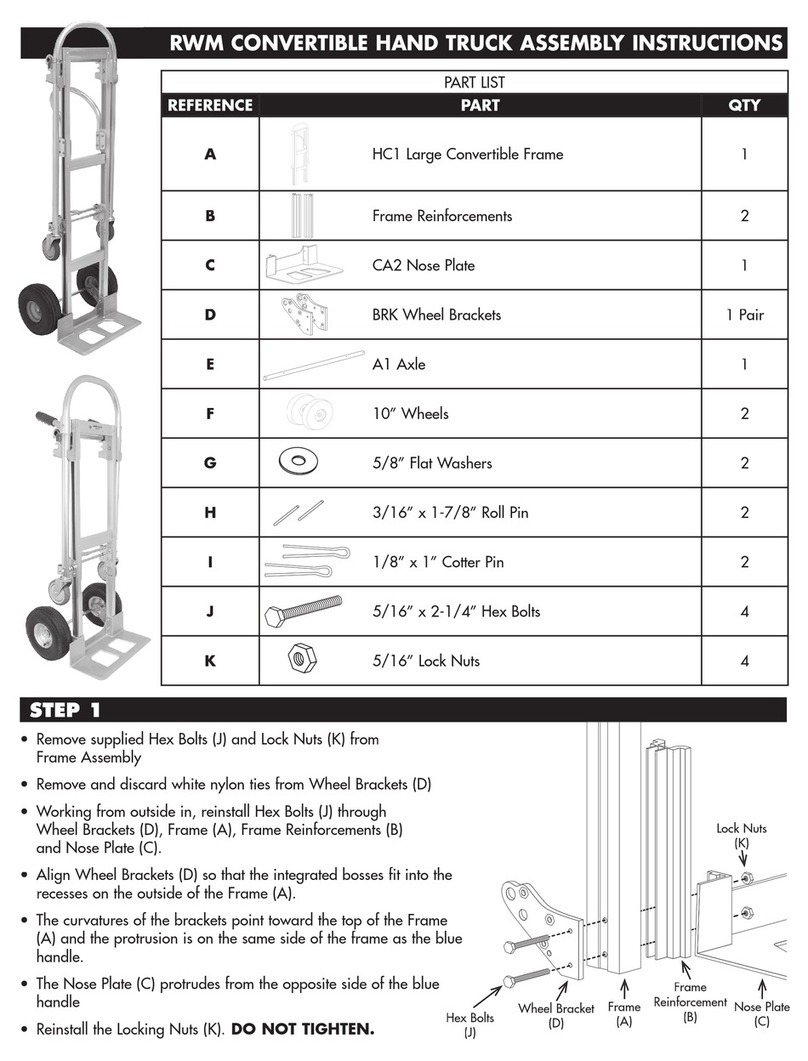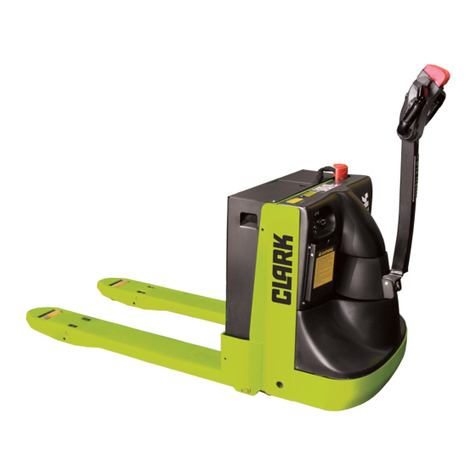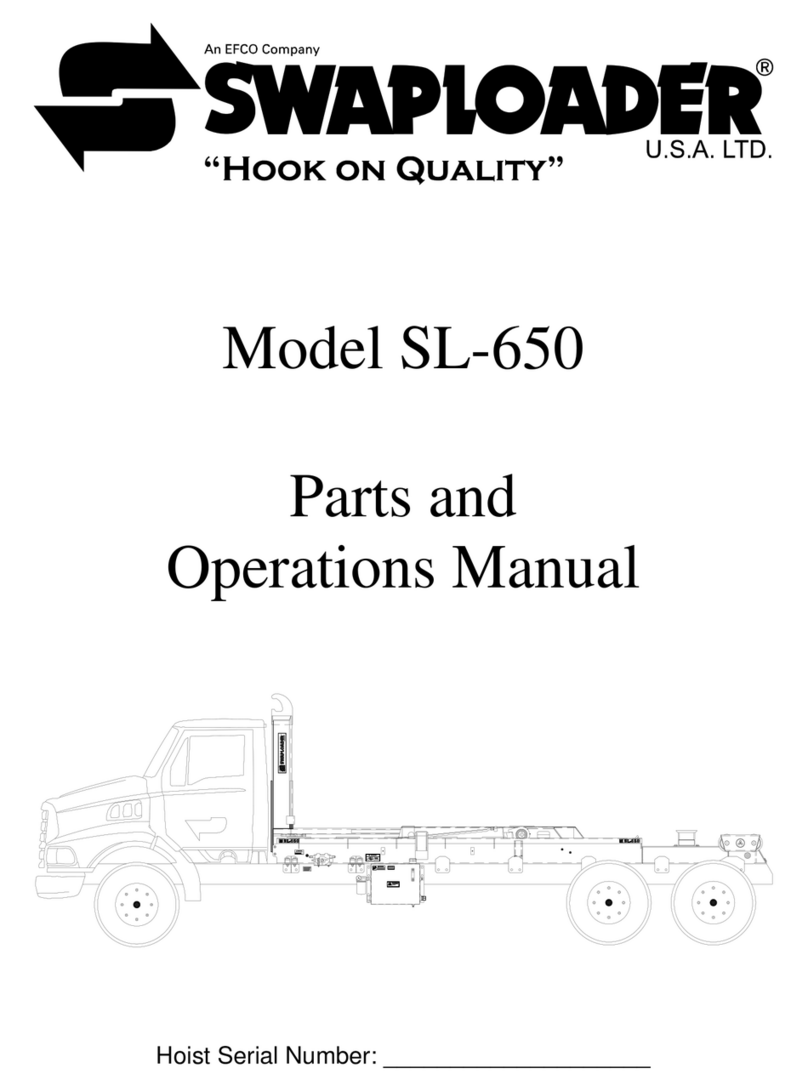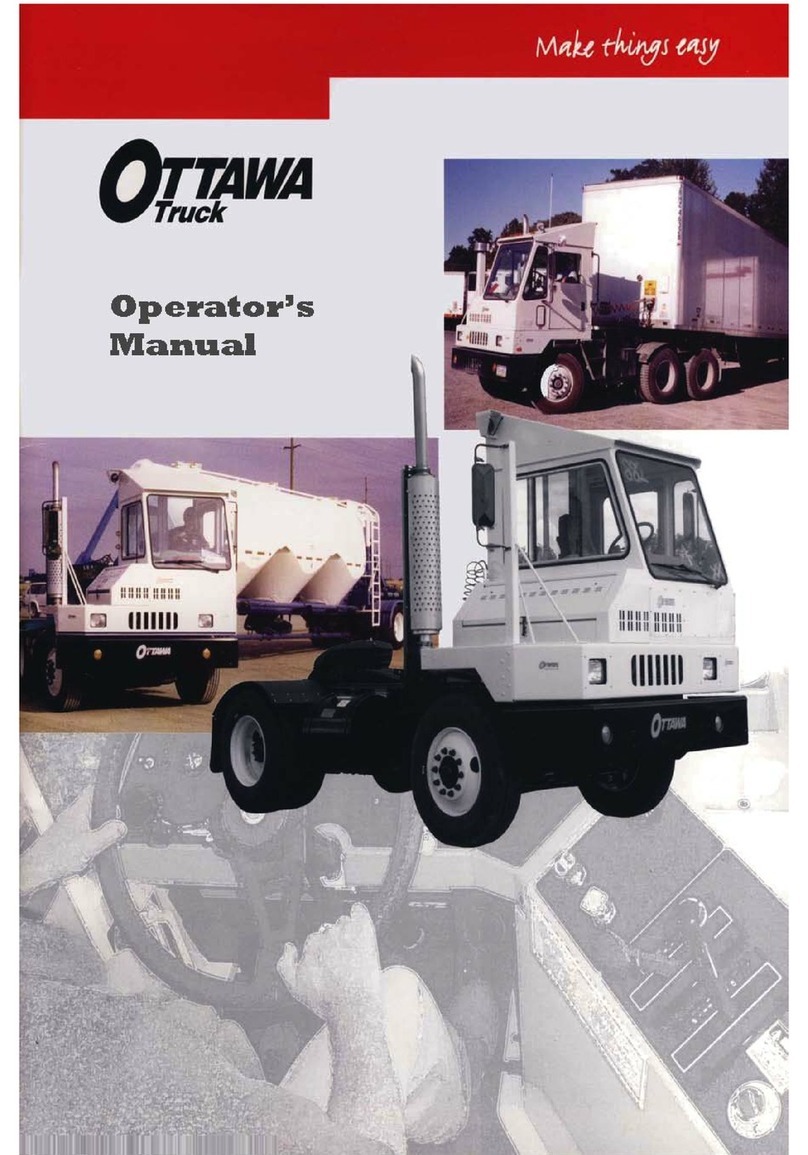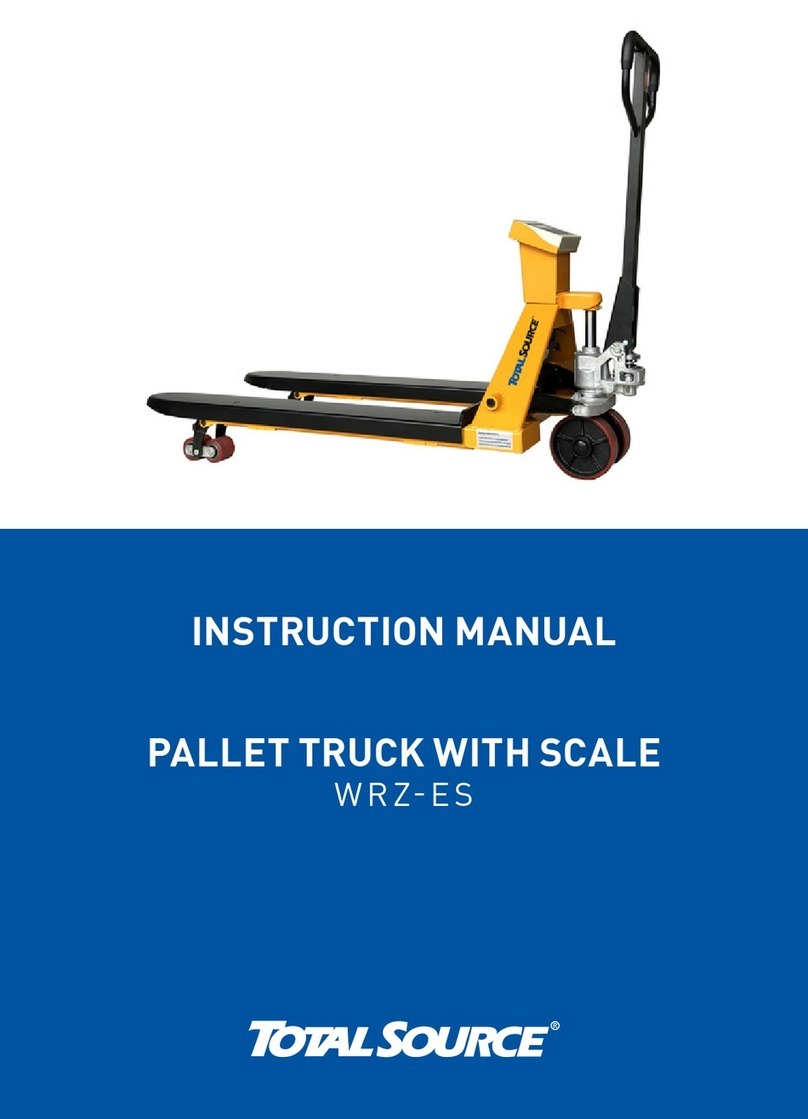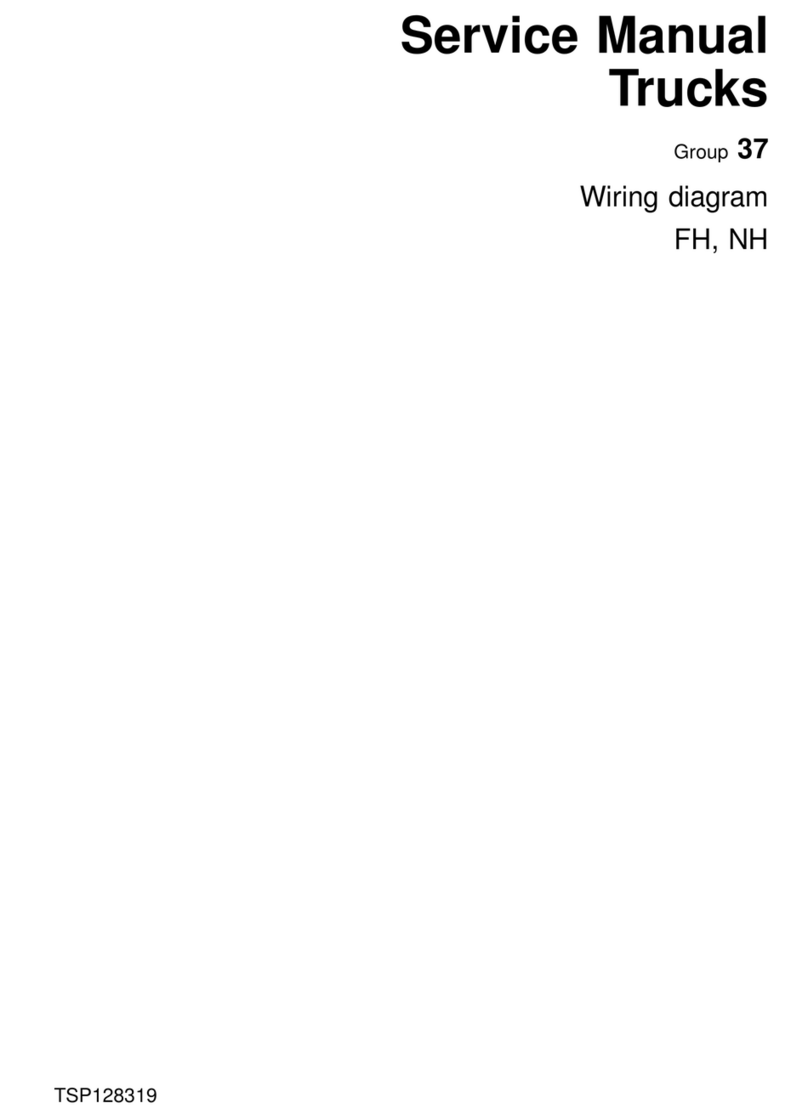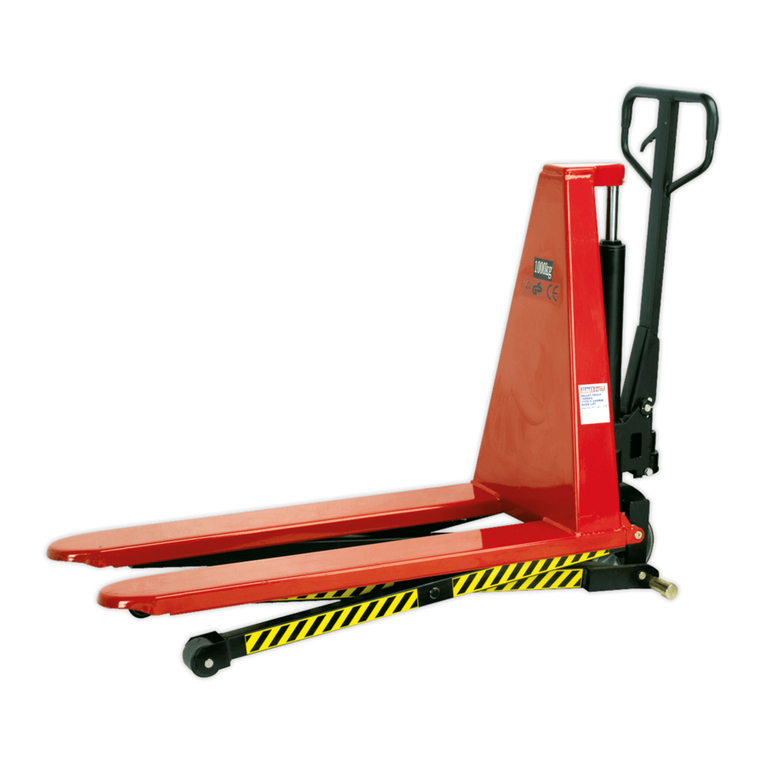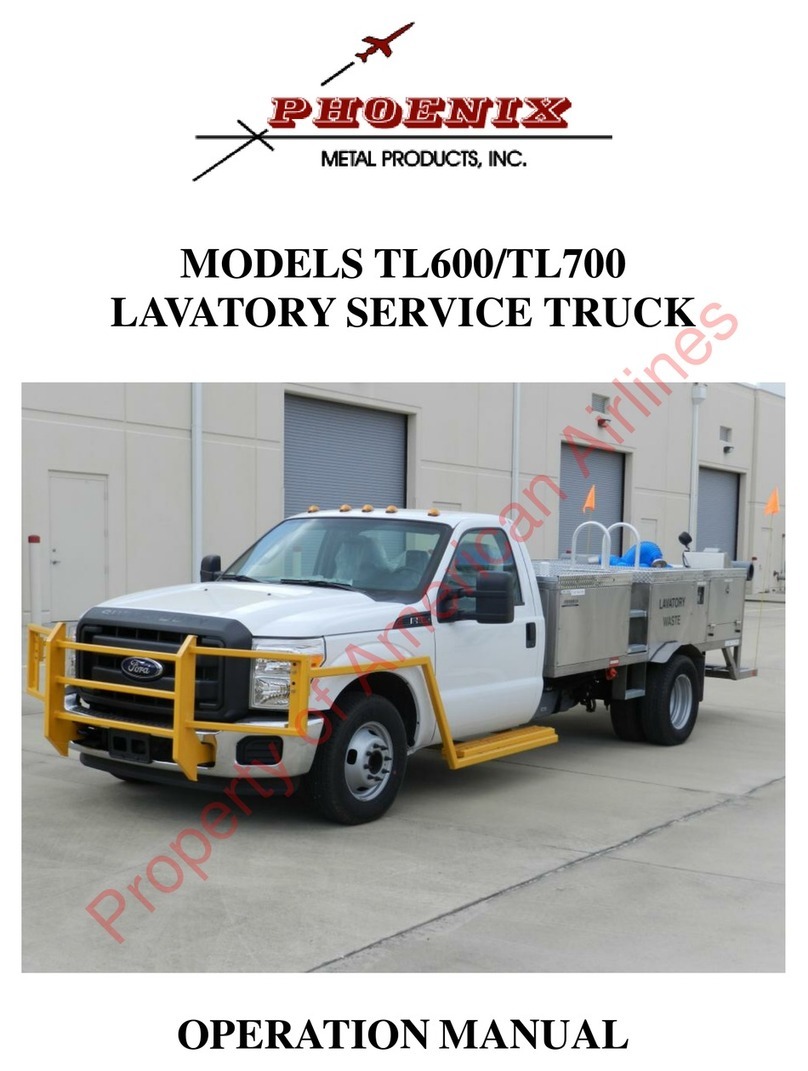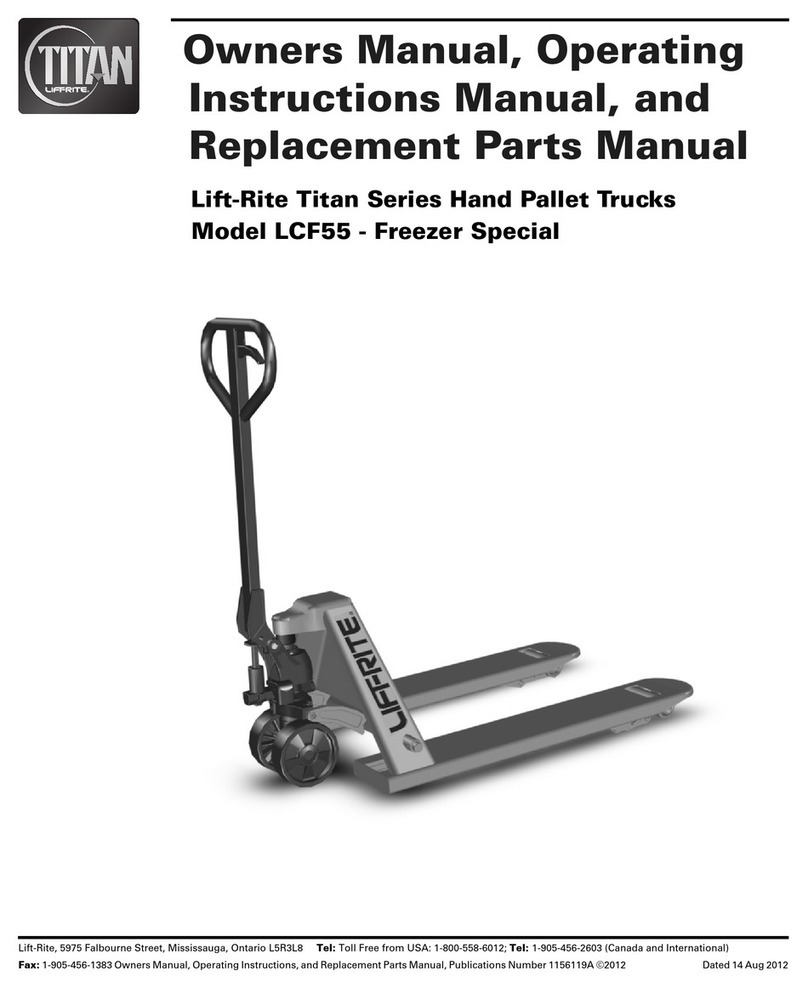EP Equipment ES16-RS User manual


I
Foreword
This manual is about how to use, operation and maintenance . Please operator
and whom in charge of the truck must read the manual carefully before operate the
truck.
We have the right to improve the truck, maybe there are some difference between
your product and the description in this manual.
If you have any questions please keep in touch with the sales department or let
the dealer know.
Notes:
1. This manual is used for operation and maintenance , the detail parameters, size a
nd specifications in context is only for reference , the real parameters will depend on
sale files.
2. Manual pictures for reference only, the real car shall prevail, and shall not affect the
manual use.
EP EQUIPMENT CO.,LTD.
Address: XIAQUAN,DIPU,ANJI,ZHEJIANG,CHINA
Tel:86-571-28031990
Fax:86-571-28035616
Net:www.ep-ep.com
Email:Service@ep-ep.com
ALL RIGHT RESERVED COPYRIGHT
2016.11 FRIST EDITION

II
WARNING!
TO PREVENT SETIOUS RISK OF INJURY TO
YOURSELF AND OTHERS OBSERVE THE
FOLLOWING SAFETY INSTRUCTIONS.
These truck may become hazardous if adequate maintenance is neglected. Therefore,
adequate maintenance facilities, trained personnel and procedures should be
provided.
Maintenance and inspection shall be performed in conformance with the following
practices:
1. A scheduled planned maintenance,lubrication and inspection system should be
followed.
2. Only qualified and authorized personnel shall be permitted to maintain, repair,
adjust, and inspect truck.
3. Before leaving the truck:
–Do not park the truck on an incline.
–Fully lower the load forks.
–Set the key switch to the "OFF" position and remove the key.
–Drawing back the emergency brake switch .
–Fold in the folding side arm
4. Before starting to operate truck:
–Be in operating position
–Place directional control in neutral
–Before operating truck, check functions of lift systems, directional control,speed
control,steering, warning devices and brakes.
5. Avoid fire hazards and have fire protection equipment present. Do not use open
flame to check lever, or for leakage of electrolyte and fluids or oil. Do not use open
pans of fuel or flammable cleaning fluids for cleaning parts.
6. Brakes,steering mechanisms, control mechanisms,guards and safety devices shall
be inspected regularly and maintained in legible condition.
7. Capacity, operation and maintenance instruction plates or decals shall be
maintained in legible condition.
8. All parts of lift mechanisms shall be inspected to maintain them in safe operating
condition.

III
9. All hydraulic systems shall be regularly inspected and maintained in conformance
with good practice. Cylinders, valves and other similar parts shall be checked to
assure that "drift" has not developed to the extent that it would create a hazard.
10. Truck shall be kept in a clean condition to minimize fire hazards facilitate detection
of loose or detective parts.
11. Modifications and additions which affect capacity and safe truck operation shall
not be performed by the customer or user without manufacturers prior written
approval. Capacity, operation and maintenance plates or decals shall be changed
accordingly.

IV
Catalog
Correct use and application........................................................................................1
1. Truck Description ...................................................................................................2
1.1 Application.....................................................................................................2
1.2 Assemblies....................................................................................................3
1.2.1 Folding operator pedal.........................................................................4
1.2.2 Safety Gate..........................................................................................4
1.2.3 Control Handle.....................................................................................4
1.2.4 Key switch............................................................................................5
1.2.5 Battery discharge indicator...................................................................5
1.2.6 Emergency brake switch......................................................................5
1.3 Identification points and data plates...............................................................6
1.3.1 Truck data plate ...................................................................................7
1.3.2 Capacity chart......................................................................................7
1.4 Specifications ................................................................................................8
1.4.1 Performance data for standard trucks ..................................................8
1.4.2 Dimensions..........................................................................................9
2.Transport and Commissioning...............................................................................12
2.1Transport......................................................................................................12
2.1.1 Lifting the truck by crane....................................................................12
2.1.2 Securing the truck during transport ....................................................12
2.2 Using the Truck for the First Time................................................................12
2.3 During brake-in............................................................................................13
3.Operation..............................................................................................................14
3.1 Safety Regulations for the Operation of stackers.........................................14
3.2 Starting up the truck.....................................................................................15
3.2.1 Preparing...........................................................................................15
3.2.2 Travelling, Steering, Braking ..............................................................16
3.2.3 Lifting, transporting and depositing loads...........................................17
3.2.4 Parking the truck securely..................................................................18
4.Battery Maintenance & Charging...........................................................................19
4.1 Safety regulations for handling acid batteries ..............................................19
4.2 Charging the battery....................................................................................20
4.2.1 Exposing the battery..........................................................................20
4.2.2 Charging the battery ..........................................................................20
4.3 Battery removal and installation...................................................................21
4.3.1 Changing the battery..........................................................................21
5.Stacker Maintenance.............................................................................................23
5.1 Operational safety and environmental protection.........................................23
5.2 Maintenance Safety Regulations .................................................................23
5.3 Servicing and inspection..............................................................................24
5.3.1 Maintenance Checklist.......................................................................25
5.3.2 Lubrication Schedule .........................................................................27

V
5.3.3 Maintenance Instructions...................................................................28
5.4 Decommissioning the industrial truck...........................................................30
5.4.1 Prior to decommissioning...................................................................30
5.4.2 During decommissioning....................................................................30
5.4.3 Restoring the truck to operation after decommissioning.....................30
5.5 Safety checks to be performed at regular intervals
and following any unusual incidents......................................................31
5.6 Final de-commissioning, disposal................................................................31
6. Troubleshooting....................................................................................................32

1
Correct use and application
The “Guidelines for the Correct Use and Application of Industrial Trucks” (VDMA) are
supplied with the truck. The guidelines form part of these operating instructions and
must be observed. National regulations apply in full.
The truck described in the present operator manual is an industrial truck designed for
lifting and transporting load units.
It must be used, operated and serviced in accordance with the present instructions.
Any other type of use is beyond the scope of application and can result in damage to
personnel, the truck or property. In particular, avoid overloading the truck with loads
which are too heavy or placed on one side. The data plate attached to the truck or the
load diagram are binding for the maximum load capacity. The industrial truck must not
be used in fire or explosion endangered areas, or areas threatened by corrosion or
excessive dust.
Proprietor responsibilities
For the purposes of the present operator manual the “proprietor” is defined as any
natural or legal person who either uses the industrial truck himself, or on whose behalf
it is used. In special cases (e.g. leasing or renting) the proprietor is considered the
person who, in accordance with existing contractual agreements between the owner
and user of the industrial truck, is charged with operational duties.
The proprietor must ensure that the truck is used only for the purpose it is intended for
and that danger to life and limb of the user and third parties are excluded.
Furthermore, accident prevention regulations, safety regulations and operating,
servicing and repair guidelines must be followed. The proprietor must ensure that all
truck users have read and understood this operator manual.
Failure to comply with the operator manual shall invalidate the warranty. The same
applies if improper work is carried out on the truck by the customer or third parties
without the permission of the manufacturer’s customer service department.
Attaching accessories
The mounting or installation of additional equipment which affects or supplements the
performance of the industrial truck requires the written permission of the manufacturer.
In some cases, local authority approval shall be required.
Approval of the local authorities however does not constitute the manufacturer’s
Approval.

2
1. Truck Description
1.1Application
The truck is a tiller operated electric stacker with a folding operator platform and side
arms.The truck is designed for lifting and transporting goods on a level surface. The
truck can pick up, outside the load wheel area, open bottom or diagonal board
pallets as well as roll cages . The capacity of the truck is shown on the data plate or
the data capacity plate Qmax.

3
1.2 Assemblies
Item
Component
Item
Component
1
Folding operator pedal
6
Mast
2
Safety Gate
7
Emergency stop swich
3
Drive wheel
8
Fork
4
Battery discharge indicator
9
Chassis
5
Control Handle
10
Caster wheel

4
1.2.1Folding operator pedal
Folding operator pedal have two state: fold and
unfold. While the state of Folding operator pedal
changed the Travel speed (Max) changed too.
Because of gas spring the folding operator pedal
can fold self-motion.
1.2.2Safety Gate
Travel speed (Max) will change when the state of
side arm is changed. Travel speed (Max) is much
higher when the side arm is unfolded. The side
arm can protect operator when truck running in
high speed.
1.2.3 Control Handle
Item
Control / Display
Function
1
Key switch
Switches control current on and off.
2
“Lower” button
Lowers load forks.
3
“Lift” button
Raises load forks.
4
Travel switch
Controls the driving speed and direction
5
Warning signal button
Triggers a warning signal.
6
Collision safety switch
Safety function which, when activated, forces the
truck to reverse until the switch restored to neutral.

5
1.2.4 Key switch
Switches control current on and off.
Truck power supply is break off when the key turn "OFF".
Truck power supply is turn on when the key turn "ON".
Removing the key prevents the truck from being switched
on by unauthorised personnel.
1.2.5 Battery discharge indicator
The LEDs (1) represent battery residual capacity, The
LCD (2) displays the operating hours
Battery Discharge Indicator(1)
When the truck has been released via the key switch,
the battery charge status is displayed.
The colours of the LEDs (1) represent the following
conditions:
LED colour
value
Green
Standard battery residual capacity
70-100%
Orange
Standard battery residual capacity
30-60%
Flashing Red
Standard battery residual capacity
0-20%
Battery Discharge for 70%, A flashing red show on storage battery charge warning.
Battery Discharge for 80%, Two flashing reds show on battery charge used up
warning, Lifting is now inhibited. The battery must be charged.
Operating hours display
Display range between 0.0 and 99,999.0 hours. Travel and lifting are logged. This is a
backlit display.
Power up test
On power up the display shows:
–the operating hours
–the charge status
1.2.6Emergency brake switch
The supply current is interrupted, all electrical functions are deactivated and the truck
is automatically braked.
Low Voltage Protection
This vehicle has a low-voltage protection function.
When the battery voltage is less than, the vehicle will appear that the driving speed
is slow ,but the fork can be lifted.And now the battery needs to be charged.

6
1.3 Identification points and data plates
Item
Description
1
Operator Warning Decal
2
Stacker data plate
3
Direction Decal On Control Handle
4
“Never stand ” warning
5
“Never put your hands in inner“warning
6
Capacity chart

7
1.3.1Truck data plate
Item
Description
Item
Description
1
Manufacturer
6
Fork length
2
Type
7
Lift height
3
Load capacity(kg)
8
Battery nominate capacity
4
Load center
9
Service weight with battery
5
Fork width
10
Serial no.
For queries regarding the truck or ordering spare parts please quote the truck serial
number(10).
MODEL NUMBER EXAMPLE
Electric Stacker Series label
Load capacity:16=1600Kg
1.3.2 Capacity chart
The chart given above shows the relation
between the load center and the weight of
loads.
ES
16-
RS

8
1.4 Specifications
Technical specification details in accordance with VDI2198. Technical modifications
and additions reserved.
1.4.1Performance data for standard trucks
Description
ES16-RS
Unit
Q
Load capacity
1600
kg
C
Load center
600
mm
Travel speed
laden
5.5
km/h
unladen
6.0
km/h
Lifting speed
laden
0.13
m/s
unladen
0.16
m/s
Lowering speed
laden
0.25
m/s
unladen
0.24
m/s
Maximum grade ability S2
5 min.
laden
8
%
unladen
16
%
Service brake
electromagnetic
Service weight
Incl. battery
1350
kg
Motor rating power
Driving
1.5
Kw
Lifting
3.0
Kw
Tyre type
PU/PU
Tyre size, operator side
1-Ф230×75
mm
Tyre size, load side
4-Ф85×70
mm
Balance wheels (dimensions)
2-Ф130×55
mm
Battery
Type
Battery
voltage/rated capacity
24/210
V/Ah
Sound level at operator's ear
AC
dB(A)
74

9
1.4.2Dimensions
Description
ES16-RS
Unit
x
Load distance
693
mm
Y
Wheelbase
1375
mm
b3
Fork carriage width
800
mm
b5
Distance between fork-arms
570/600/685
mm
h1
Height, mast lowered
2020
mm
h2
Free lift
100
mm
h3
Lift height
3000
mm
h4
Height, mast extended
3465
mm
h14
Height of tiller arm in operating position, min/ max
1150/1480
mm
h13
Fork height, lowered
88
mm
l1
Overall length
2495
mm
l2
Length to face of forks
879
mm
b1
Overall width
850
mm
s
Fork dimensions
thickness
60
mm
e
width
190
mm
l
length
1150
mm
m2
Ground clearance
28
mm
Wa
Turning radius
1730/2090
mm
Ast
Aisle width1), 1000×1200 pallet crossways
2605/2965
mm
Ast
Aisle width1), 800×1200 pallet lengthways
2575/2935
mm
1)Including safety distance a = 200 mm

10
Standard Mast Types (mm)
Mast types
Close Mast
height
Free height
lift height
Extended Mast
Height
h1
h2
h3
h4
Two Stage Mast
(Wide view)
1870
100
2650(2700)
3165
2020
100
2950(3000)
3465
2170
100
3250(3300)
3765
2320
100
3550(3600)
4065
2470
100
3850(3900)
4365
2600
100
4110(4200)
4625
Two Stage Mast
(Free Lifting)
1819
1320
2620(2700)
3135
1969
1470
2920(3000)
3435
2119
1620
3220(3300)
3735
Three Stage Mast
(Free Lifting)
1822
1390
3990(4000)
4460
2022
1590
4490(4500)
4960
2122
1690
4790(4800)
5260
2187
1760
4990(5000)
5460
2278
1840
5250(5300)
5760
2352
1910
5440(5500)
5910

11
ES16-RS

12
2.Transport and Commissioning
2.1Transport
2.1.1Lifting the truck by crane
1.Only use crane lifting gear with sufficient
capacity.
2.Loading weight = net weight of truck (+ battery
weight for electric trucks).
3.crane lifting gear get across fixed hole(1) to
Lifting the truck.
–Park the truck securely.(see 3.2.4 Parking the
truck securely).
–Secure the crane slings to the attachment
points (1).
Raise the truck with the forks at the side between
the axles. Raise the truck slightly and make sure
it is securely positioned on the forks. Necessary
adjust or secure the forks with stops. Lower the
truck slowly onto the ground and prevent it from
rolling away.
2.1.2Securing the truck during transport
The truck must be securely fastened when
transported on a lorry or a trailer.
Keep pedal and side arm folded,avoid them out
of bodywork.
- The rope is used to fix the truck must be firm
enough.
- Check .
Both sides need to fix.
Loading must be carried out by staff specially
trained. In each case correct measurements
shall be determined and appropriate safety
measures adopted.
2.2Using the Truck for the First Time
Only operate the truck with battery current. Rectified AC current will damage the
electronic components. Cable connections to the battery (tow leads) must be less
than 6 m .
Preparing the truck for operation after delivery or transport
Procedure
–Check the equipment is complete.

13
–Check the hydraulic oil level.
–Install the battery if necessary, (see "4.4 Battery removal and installation" ).
–Charge the battery, (see "4.3 Charging the battery").
2.3During brake-in
We recommended operating the machine under light load conditions for the first stage
of operation to get the most from it. Especially the requirements given below should
be observed while the machine is in a stage of 100 hours of operation.
1. Must prevent the new battery from over discharging when early used.
2. Perform specified preventive maintenance services carefully and completely.
3. Avoid sudden stop, starts or turns.
4. Oil changes and lubrication are recommended to do earlier than specified.
5. Limited load is 70~80% of the rated load.

14
3.Operation
3.1Safety Regulations for the Operation of stackers
Driver authorisation: The stacker may only be used by suitably trained personnel,
who have demonstrated to the proprietor or his representative that they can drive
and handle loads and have been authorised to operate the truck by the proprietor or
his representative.
Driver’s rights, obligations and responsibilities: The driver must be informed of
his duties and responsibilities and be instructed in the operation o f the truck and
shall be familiar with the operator manual . The driver shall be afforded all due rights .
Safety shoes must be worn with pedestrian operated trucks.
Unauthorised Use of Truck: The driver is responsible for the truck during the time it
is in use. He shall prevent unauthorised persons from driving or operating the truck.
It is forbidden to carry passengers or lift personnel.
Damage and Faults: The supervisor must be immediately informed of any damage
or faults to the stacker. Trucks not safe for operation (e.g. wheel or brake problems)
must not be used until they have been rectified.
Repairs: The driver must not carry out any repairs or alterations to the stacker without
the necessary training and authorisation to do so. The driver must never disable or
adjust safety mechanisms or switches.
Hazardous area: A hazardous area is defined as the area in which a person is at
risk due to truck movement, lifting operations, the load handler (e.g. forks or
attachments) or the load itself. This also includes areas which can be reached by
falling loads or lowering operating equipment.
Unauthorised persons must be kept away from the hazardous area. Where there is
anger to personnel, a warning must be sounded with sufficient notice. If unauthorised
personnel are still within the hazardous area the truck shall be brought to a halt
immediately.
Safety Devices and Warning Signs: Safety devices, warning signs and warning
instructions shall be strictly observed.
Table of contents
Other EP Equipment Truck manuals
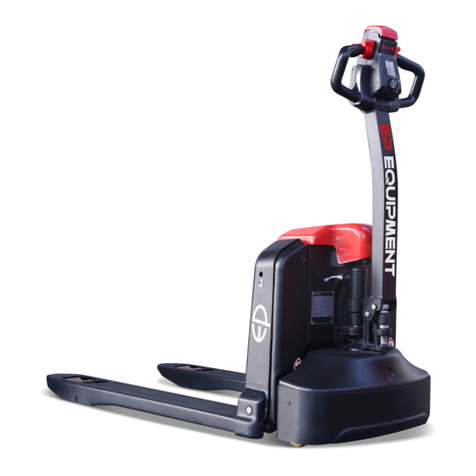
EP Equipment
EP Equipment EPL152 User manual
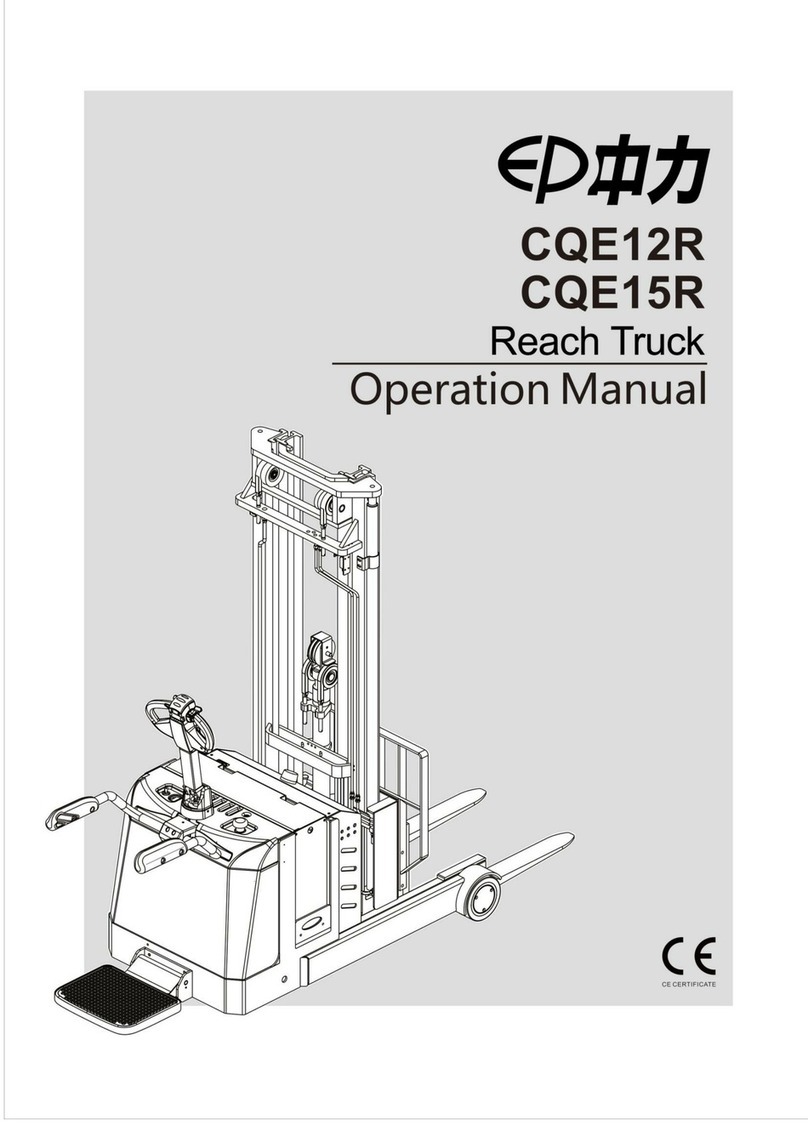
EP Equipment
EP Equipment CQE12R User manual
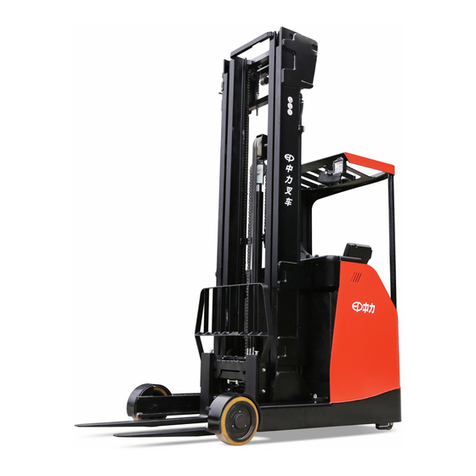
EP Equipment
EP Equipment CQD16 User manual
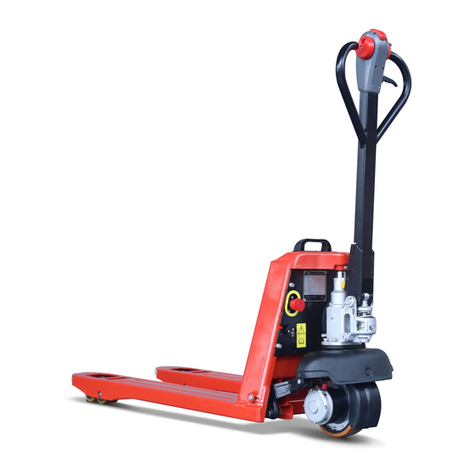
EP Equipment
EP Equipment HPL152 User manual
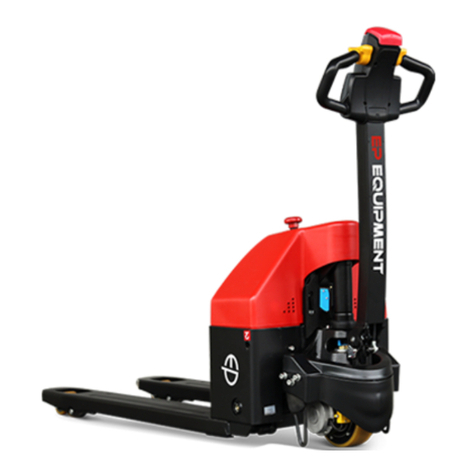
EP Equipment
EP Equipment EPT20-15ET User manual
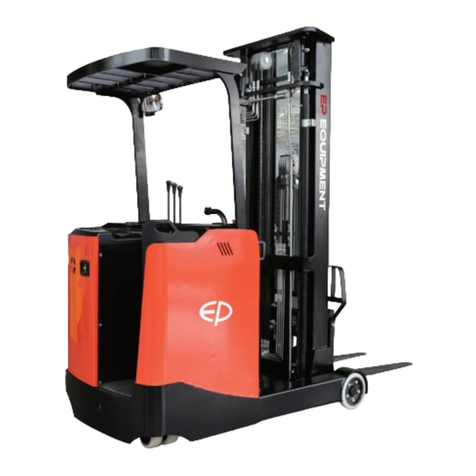
EP Equipment
EP Equipment CQD15S-E User manual
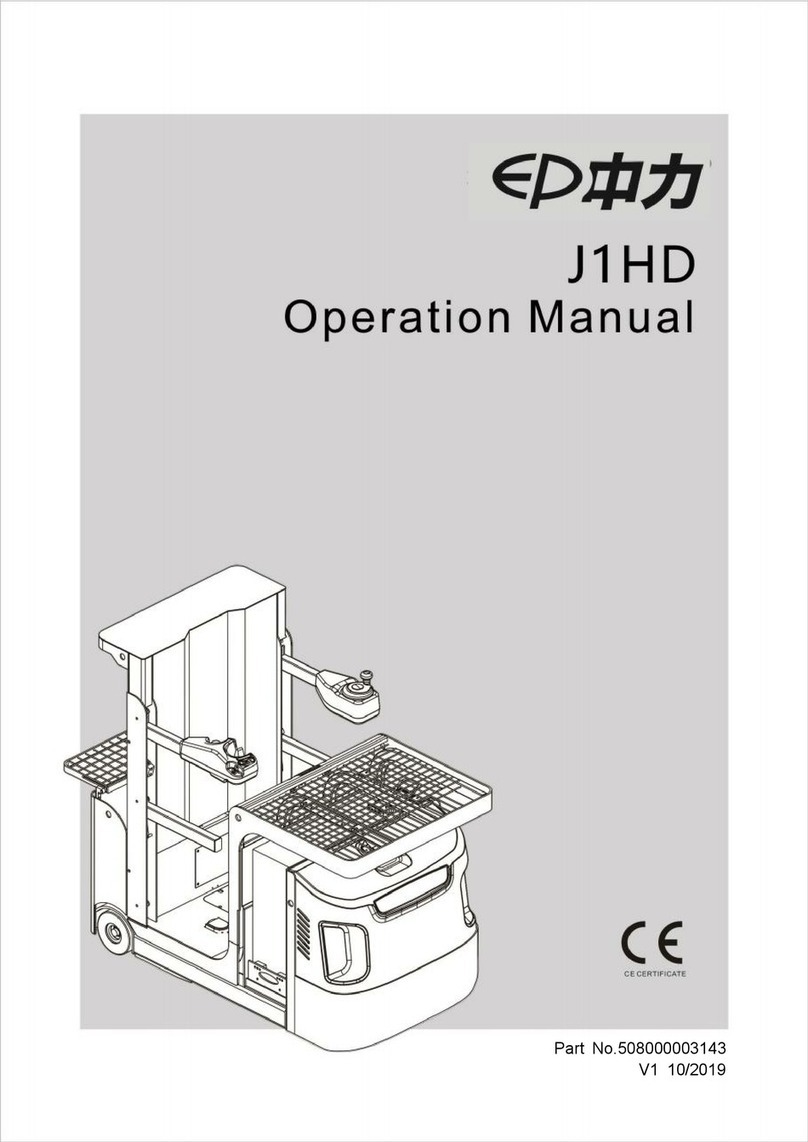
EP Equipment
EP Equipment J1HD User manual
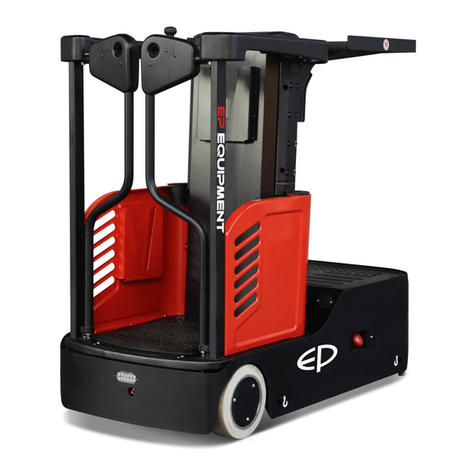
EP Equipment
EP Equipment LIST JX0 User manual
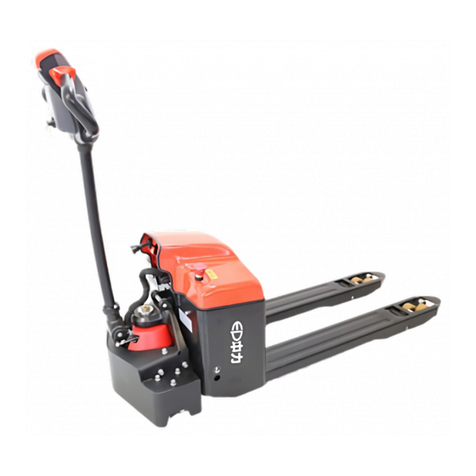
EP Equipment
EP Equipment EPT16-ET User manual
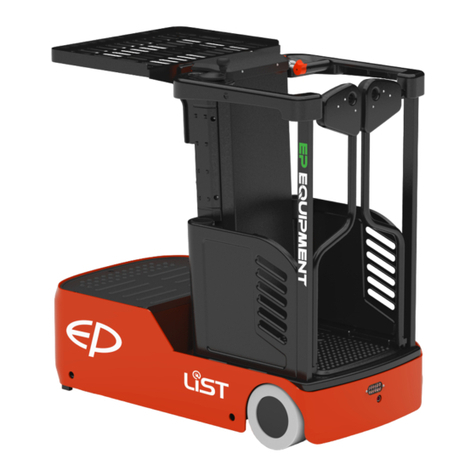
EP Equipment
EP Equipment LIST JX0 User manual

